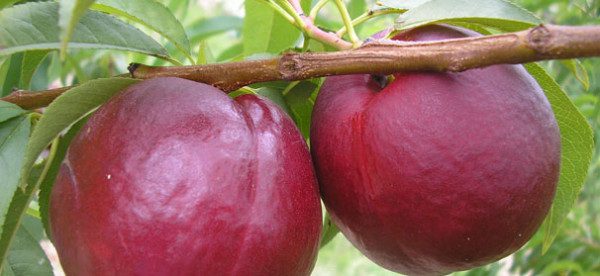

Feb 20, 2013Eastern growers have tough time with nectarines
The nectarine is identical to the peach, except it lacks pubescence (fuzz) and could be called a fuzzless peach.
Most management practices for nectarines are similar to those of peaches. However, pest management of nectarines is more difficult than with peaches in the Eastern United States, because the fuzz on peaches may act as a protective barrier to many diseases, insects and other pests. Nectarine skin also shows more blemishes from environmental and handling problems in our humid Eastern climate. Some nectarine varieties have thicker skin and very firm flesh to offset some of this pest, environmental and handling problems. Other nectarine varieties, like peach varieties, have a range of genetic susceptibility to various pests. More study needs to be done on this subject.
Nectarine varieties are generally more expensive to produce, because of the intense pest management and growing and handling practices, than most peach varieties in the Eastern United States. Based on 30 years of evaluation of white-fleshed nectarines, they appear to be more sensitive to brown rot and skin blemishes than many yellow-fleshed nectarine varieties.
In spite of the increased costs of producing nectarines in the Eastern United States, they can be profitable. Wholesale prices for fresh nectarines grown in New Jersey have been significantly higher in 2011 and 2012, generating some interest in increased plantings. Almost 12 percent of New Jersey wholesale peach shipments were nectarines in 2012. Approximately 96 percent of all nectarines produced in the United States are grown in California, and many flood New Jersey and other Eastern markets from May through October. Washington and Idaho also ship some varieties East. All of these shipments are strong competition for Eastern-grown nectarines. Lower production costs in these arid states enable them to grow and ship nectarines at a competitive price with Eastern-grown fruit.
Large produce retailers want locally grown nectarine varieties. Since peaches are not sold by varietal names, retailers may devote more shelf space to their peach display by offering not only Western peaches and nectarines, but also Eastern yellow and white nectarines to complement the Eastern peach offering. Not only does a large stone fruit display of different types of fruit generate movement, but the exquisite flavor and aroma of Eastern nectarines can generate repeat sales.
Hundreds of varieties have been evaluated over the past 40 years in Missouri, Pennsylvania and New Jersey. Like most peach varieties, nectarine varieties that have been introduced and propagated have a range of distinctive horticultural characteristics. Other than the comments mentioned previously, it is hard to generalize about nectarine varieties. Comments have been made in many horticultural publications, for example, that nectarines have a tangy flavor. This is not true, as some new nectarines have a sweet, mild and delicious subacid flavor. Many nectarine varieties have moderate to high levels of susceptibility to bacterial spot. Most of these varieties were developed in California, where it is difficult to screen for this disease.
Hundreds of commercial and advanced selections from California and Western breeding programs have been tested in New Jersey. Most are highly susceptible to bacterial spot, while some are not regularly productive and are susceptible to environmental or handling problems.
– Jerome Frecon














